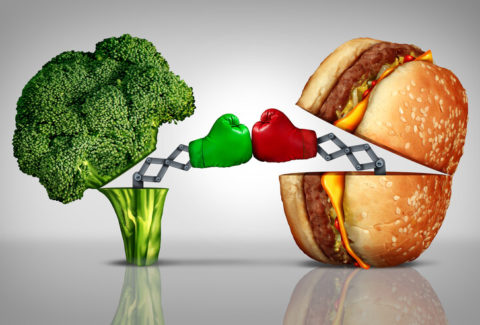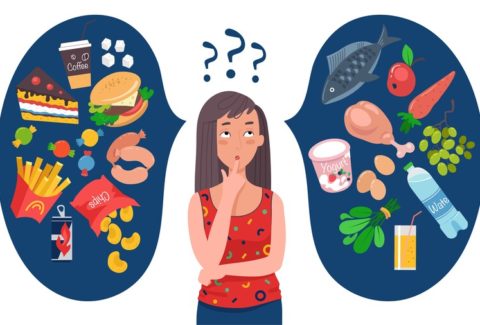Social Determinants of Health
Common to most community health clinics, waiting areas are usually crowded with patients to be seen, and it was no different this time for staff psychiatrist, Dr. Davidman. Though newly recruited, he managed to quickly develop a “well-liked” reputation with patients, generally greeting everyone waiting to be seen. “I notice many things in this waiting area, but one thing catches my attention the most: many clients and patients often stop me to ask for food.” This was the doctor’s personal reflection about complex issues that needed direct attention.
“I expect my patients to see me in the clinic, and I do my best to conduct a thorough history and examination, obtain collateral information, provide the correct diagnosis, explain my findings to them, obtain informed consent, and initiate treatment. I also do my best to help them keep their appointments, and I encourage them to take their medications. Until now, I haven’t given my full attention to the significance of my patients and clients having food available. It’s something so small, yet crucial; easy to miss, yet sine qua non for medication adherence.” In reality, patients and clients often fail to take their medication due to lack of food.
Like Dr. Davidman, while many of us do our best to provide the best possible care to our patients and clients, we often get to the point where we realize something more needs to be done. And we need to pay attention to the things less emphasized in school and ask more about those humane elements that make our patients successful. To end the internal dialogue, Dr. Davidman concluded, “I have decided to do something differently; I will now pay more attention to this and other important “non-medical health related factors” that impact patient medication adherence and recovery.
Dr. Davidman has actually been talking about the social determinants of health, and, according to the World Health Organization (WHO), these are the conditions people are born into, grow, live, work, and continue to age. These circumstances are shaped by the distribution of money, power and resources at global, national, and local levels. The social determinants of health are mostly responsible for health inequities—the unfair and avoidable differences in health status seen within and between countries.
Dr. Davidman is addressing one of the social determinants of health, known as food insecurity. According to the Life Sciences Research Office (LSRO), food insecurity is the limited or uncertain availability of nutritionally adequate and safe foods or limited or uncertain ability to acquire acceptable foods in socially acceptable ways.
Why pay attention to the social determinants of health; how do we address them; what are they exactly; and where do we even start these conversations? These questions are intended to direct the conversations to significant aspects of healthcare and the ways in which we understand our patients and clients in full.
Some of the social determinants of health we are to pay attention to include and are not limited to: food insecurity, poverty, and access to services, economic opportunity, homelessness, and domestic violence, among others.
Dr. Gonzalez treated Paul, a 64 year-old male at a dual diagnosis clinic for conditions of Bipolar Disorder, Alcohol Use Disorder, and Cocaine Use Disorder. Dr. Gonzalez believes in and practices the harm reduction model; she knows that a substance use disorder is not far different from any other chronic, general medical conditions, like diabetes mellitus or asthma. She believes and practices relapse prevention and has been able to support Paul towards significant progress. Paul has a history of medication non-adherence, but has now been stable, taking his medication regularly for the past two years. His multiple and frequent hospitalizations have subsided, and he has been able to stop using cocaine and has decreased his alcohol intake. Paul still has room for further improvement, however. There has been a plateau for the past two months, with not much further decrease in his alcohol intake. And, according to his case manager, Paul has had a few episodes of aggressive behaviors towards staff, all related to his alcohol use. “Paul” says Dr. Gonzalez, “you have made a lot of progress over the past two years, and I congratulate you. Do you realize you that you can still continue to improve? While you have been able to reduce some alcohol use, your continued drinking seems to still get you into trouble.” Paul looked at his doctor, paused, and said, “Doc., have you ever lived in a shelter? I am 64 years old, and I don’t have a place to live; I have nothing. Alcohol is all I have, and I will die if I give it up entirely. I gave up cocaine, I take my medications, and I do my best to stay out of trouble. If I stop alcohol entirely, while in a shelter, I may just die; do you want that?” Dr. Gonzalez paused and thought, “I may need to be more mindful here. And before I can continue to address Paul’s alcohol use disorder, I need to do my best and help him first get housing.”
It is so easy for professionals, like Dr. Davidman, to focus on certain outcomes while neglecting the social determinant factors relating to the behavior and health of patients and clients. According to the Substance Abuse Mental Health and Services Administration (SAMHSA), and the National Coalition for the Homeless, there is a reciprocal relationship between homelessness, mental illness and substance use disorder for single adults, like Paul; and, according to Didenko and Pankratz (2007), “stable housing during and after treatment decreases the risk of relapse.”
I have personally seen community clinics and programs where the rate of homelessness for those affected by mental illness and substance use disorder is over 30%. This subpopulation is often the hardest to reach; they often go missing, and have high rates of emergency room visits, inpatient hospitalizations, and recidivism. What if we paid more attention to housing while simultaneously attempting to stabilize someone with mental health, dual diagnosis needs; what if we made housing and food security a priority while trying to resolve the acute mental and physical health needs of our patients and clients? We are now at the point where it remains clear that the solutions to mental health and physical health needs are elusive, if our only tool is medication or even therapy. It is now clear that addressing homelessness, food insecurity, unsafe neighborhoods and financial insecurity, are all equally as important, if not, more than simple just expecting our patients and clients to come to see us every week or every month. We were called to serve, we were called to be justice advocates, and we can do so best by making sure we help address our patients and clients’ social determinants of health.
Thank you so much for reading this. Now, over to you:
1. What have you learned from this article?
2. What experience and/or wisdom could you share with me?
3. What comments would you like to leave?
See you soon.
Your friend,
Mardoche









